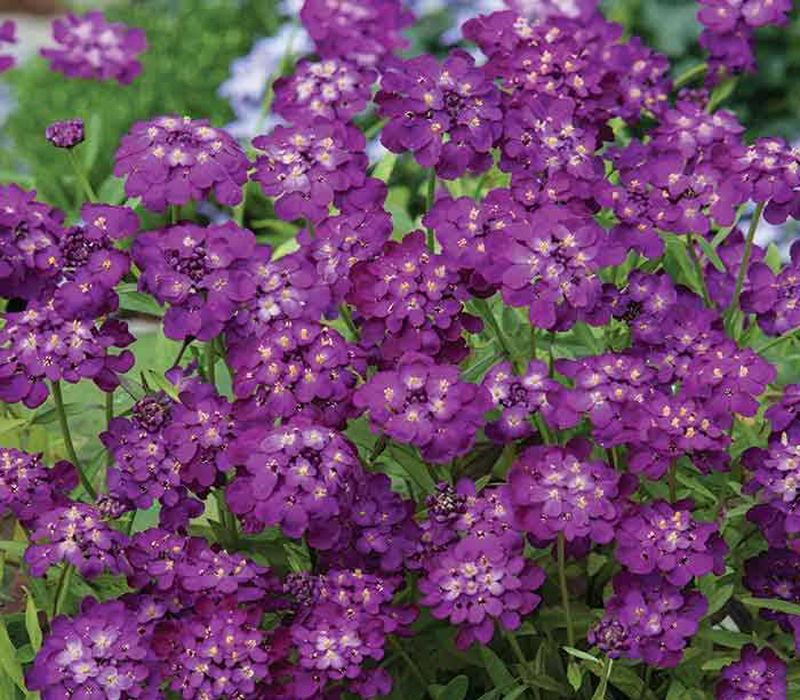Blame it on a flat tire. In 1963, a young Dewey Bunnell was riding with his family from California's Vandenberg Air Force Base when the car got a flat tire. Waiting for his dad to change the tire, he watched the clouds form "alligators in the air," and noticed a road sign for Ventura. Later in life, as a songwriter and vocalist in the band America, Bunnell used both memories to create the hit song "Ventura Highway," along with a cryptic reference to purple rain. Later, Prince used the same phrase for his best-selling song, “Purple Rain.”
You don't need to be in Ventura to have Purple Rain in your garden. Purple Rain is one of many varieties of candytuft (Iberis umbellata), an easy-to-grow, low, compact flower that blooms quickly from seed. In fact, there is still plenty of time to direct sow Purple Rain (or any of its annual candytuft relatives).
This nonstop annual bloomer has bright purple flowers on top of sprawling ground cover plants just 10 inches high. The flowers attract pollinators such as honeybees, along with butterflies and hummingbirds. It stands up to heat, humidity and drought.
Because the plants bloom best when spent flowers are removed, or deadheaded, you can use garden shears to trim the plants back a few inches whenever they look scraggly. They quickly recover and keep on blooming. At the end of the season, leave the faded flowers so they can develop into attractive seed heads.
Purple Rain is ideal for meadows, wildflower plantings and rock gardens. Because the plants grow so fast and bloom so easily, they are great for kids’ gardens. While they grow best in direct sun and well-drained neutral soil (pH 6.0-7.0) , they are so hardy they do well in almost any situation, and a wide range of soils. Water them once a week during dry seasons.
Direct sow the seeds where they are to bloom, barely covering them with soil. The seeds will germinate in about three weeks. Once the plants are up and growing, thin them to stand about six inches apart. Candytuft is totally edible, with both the leaves and flowers a welcome addition to salads or stir-fries.
At one time, candytuft was used to treat rheumatism, gout, bronchitis, and even asthma. It is also used to make an after-meal "digestive" or bitters to aid digestion. Today, scientists have found its usage as a bitter digestive tonic. Homeopaths use it to treat sore muscles.
Where it’s happy, globe candytuft may even self-sow for years of carefree blooms. And when these delightful flowers spring up unannounced, it is you who will be laughing in the purple rain.























































